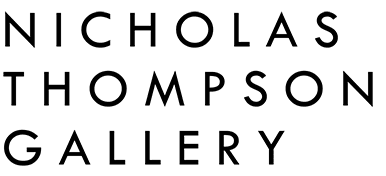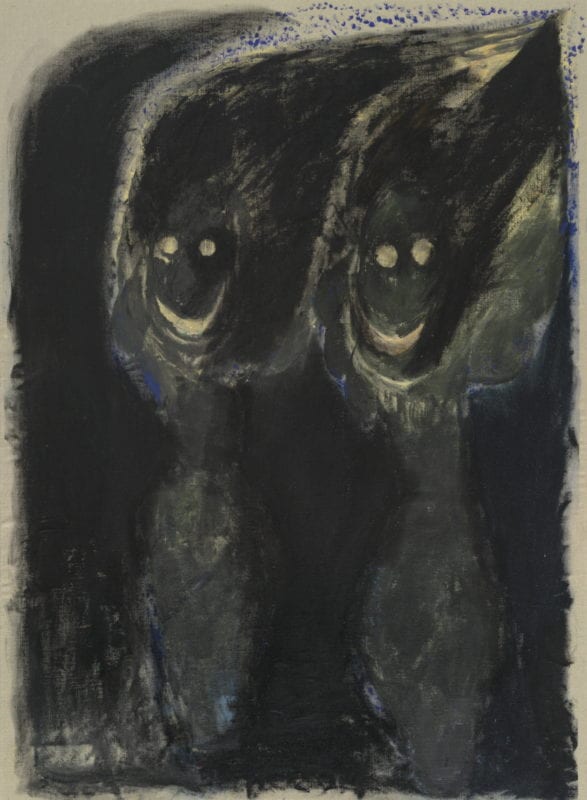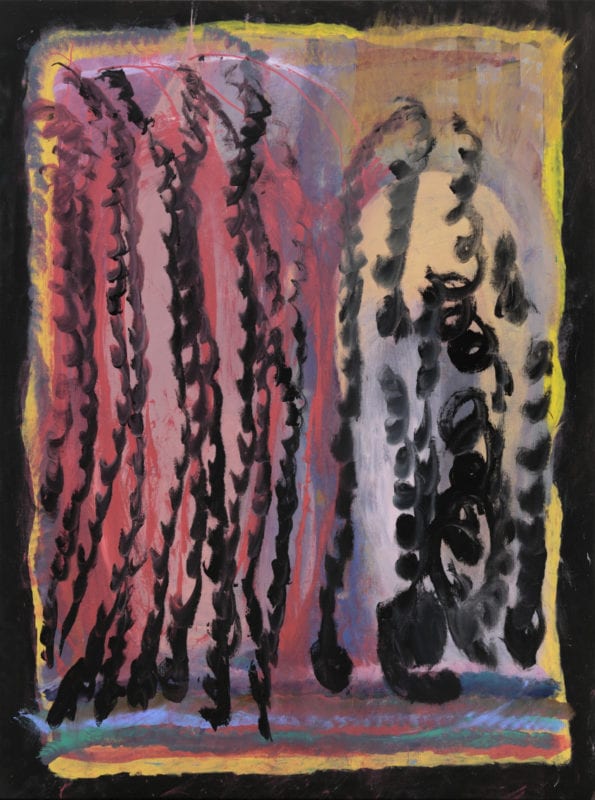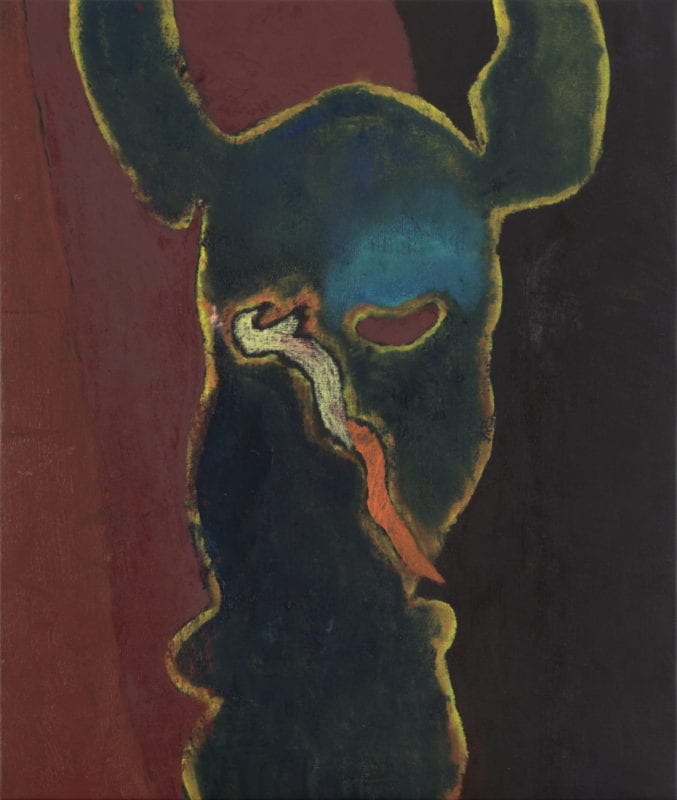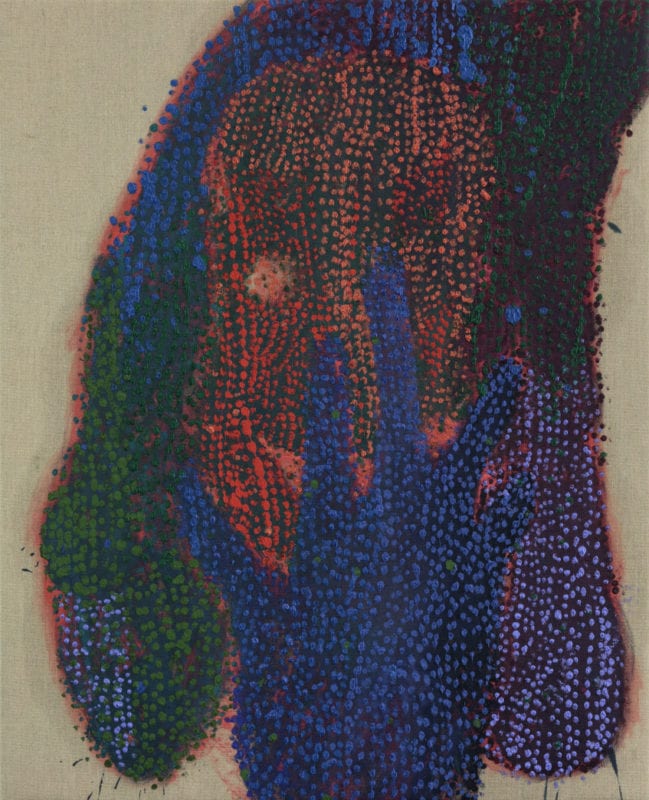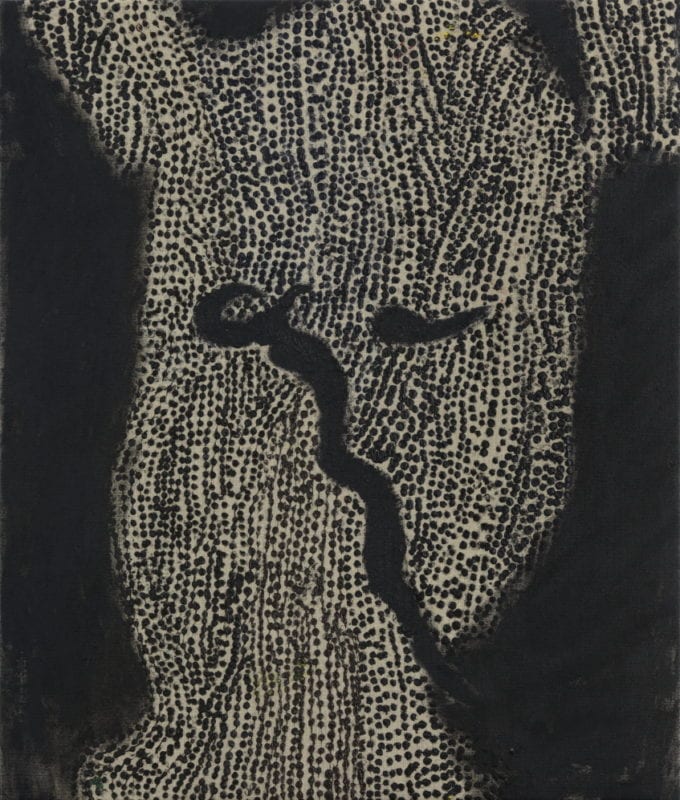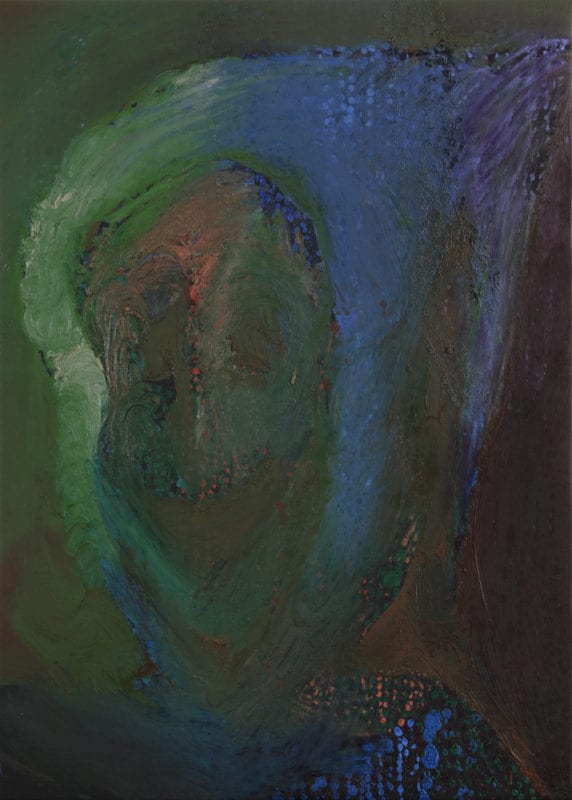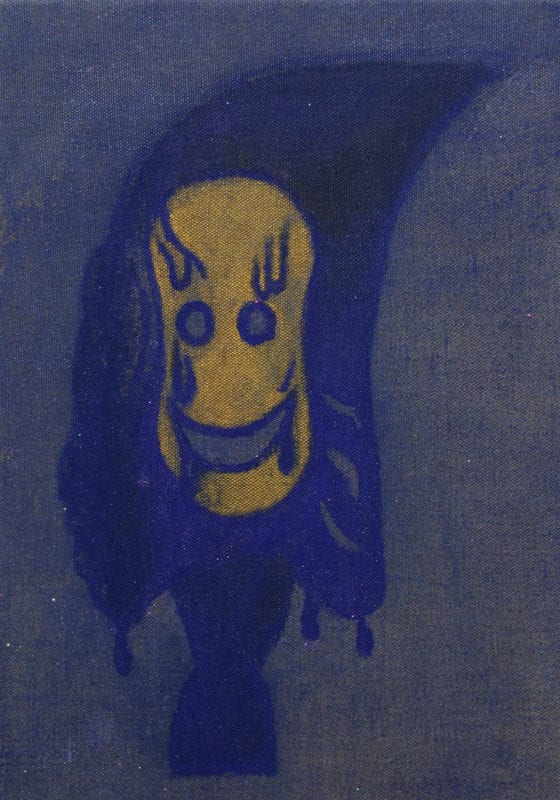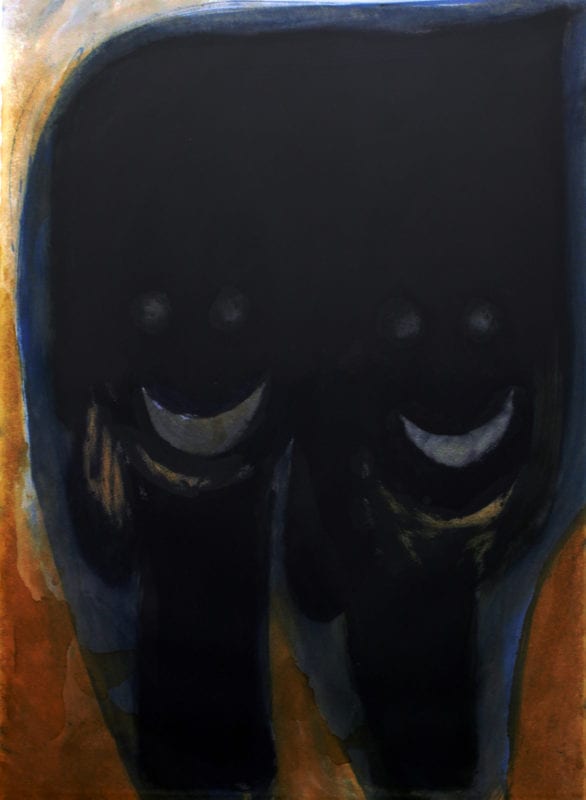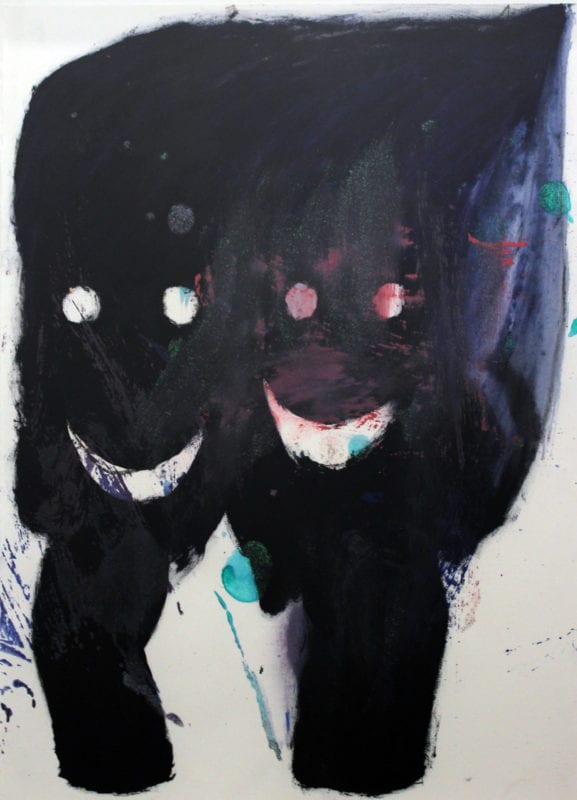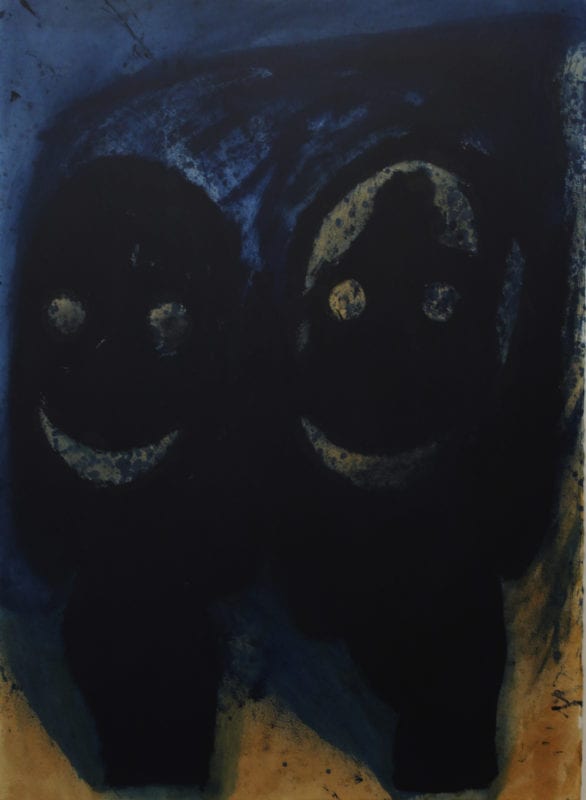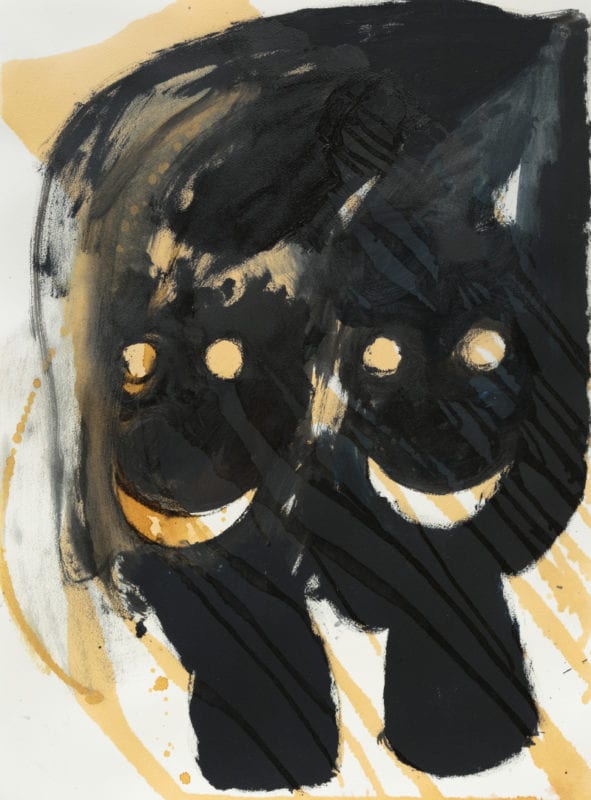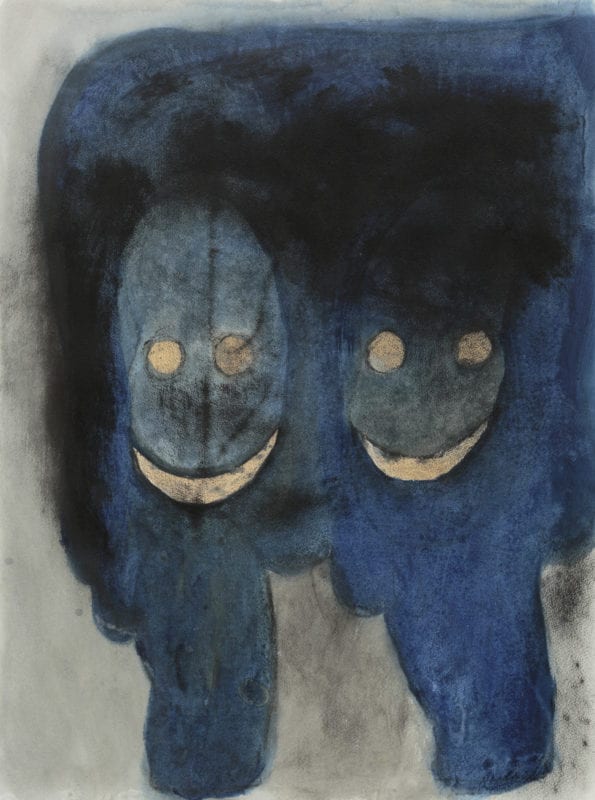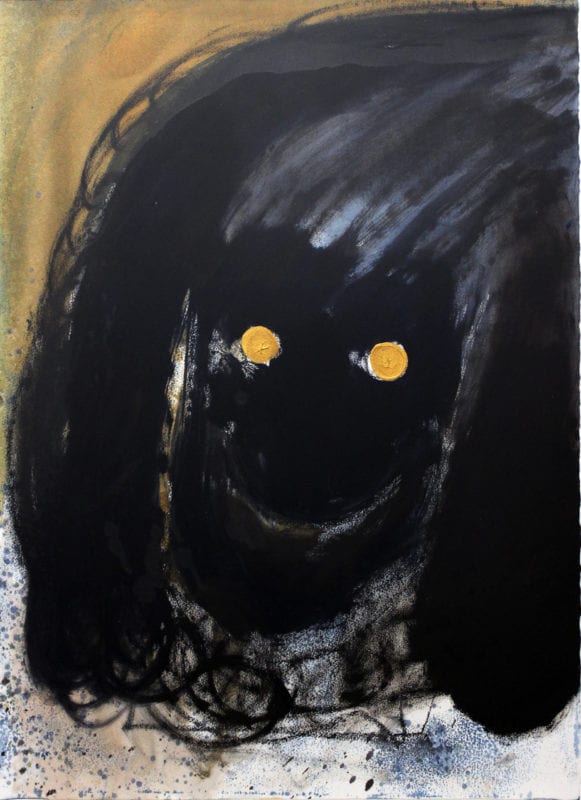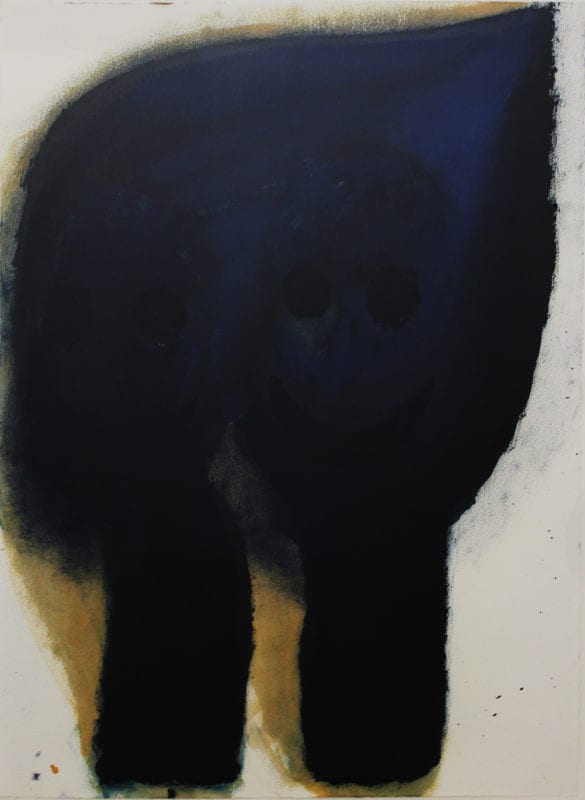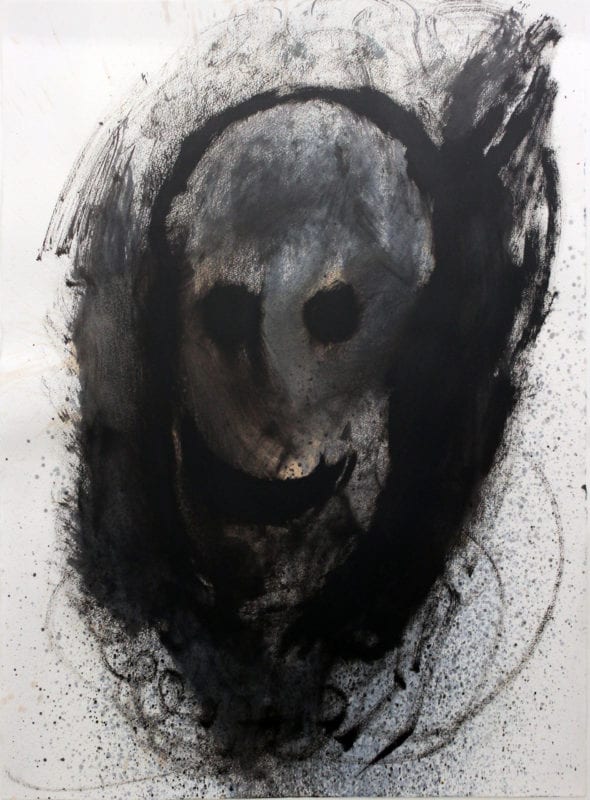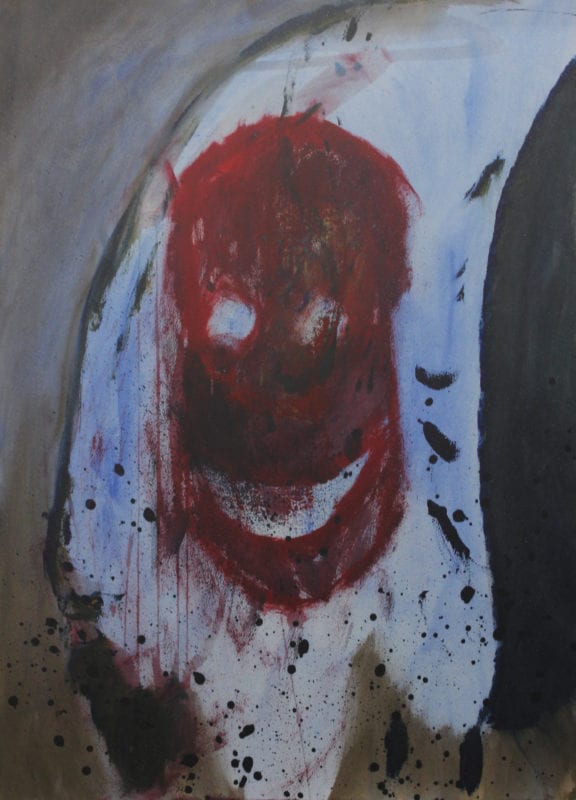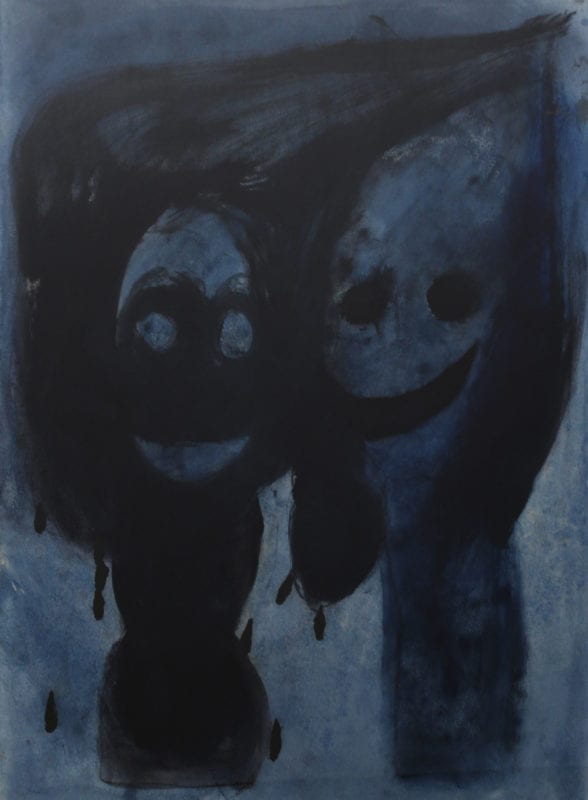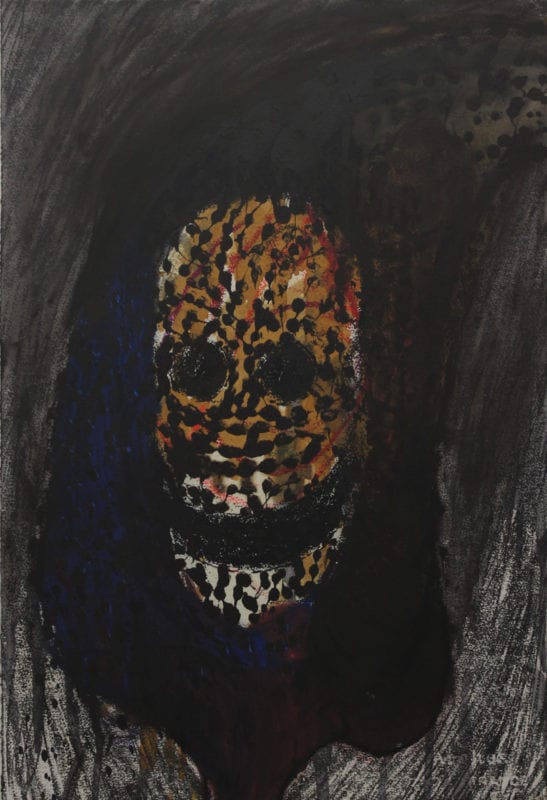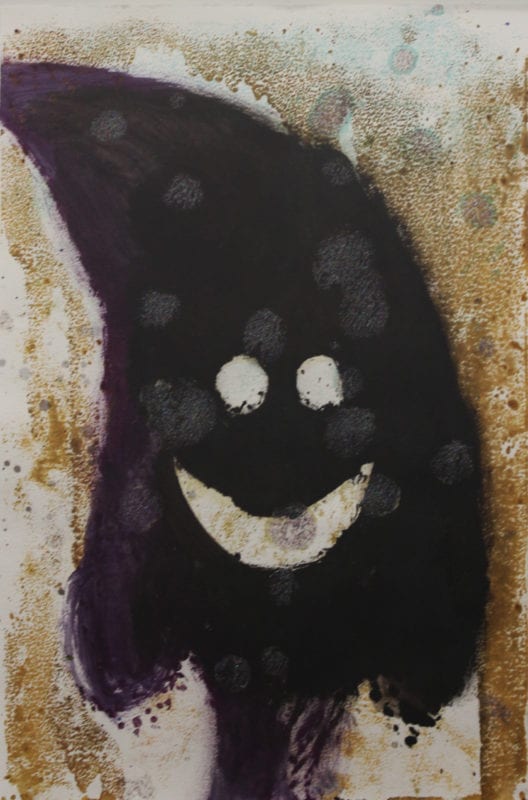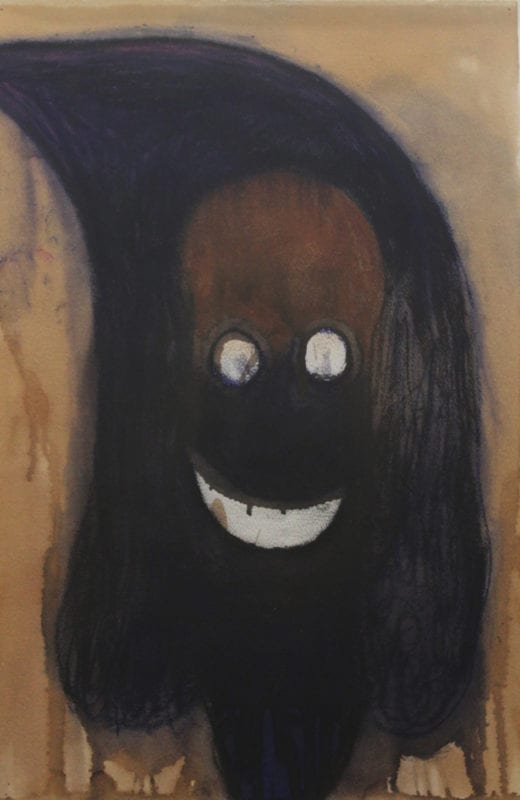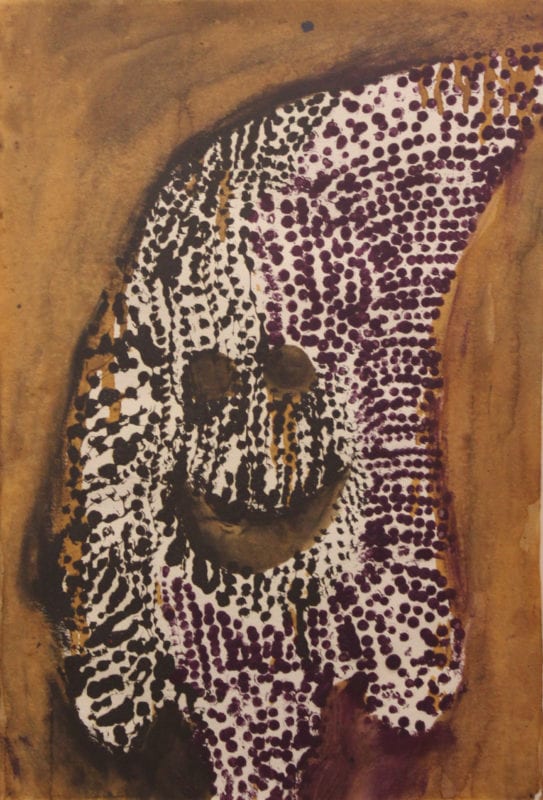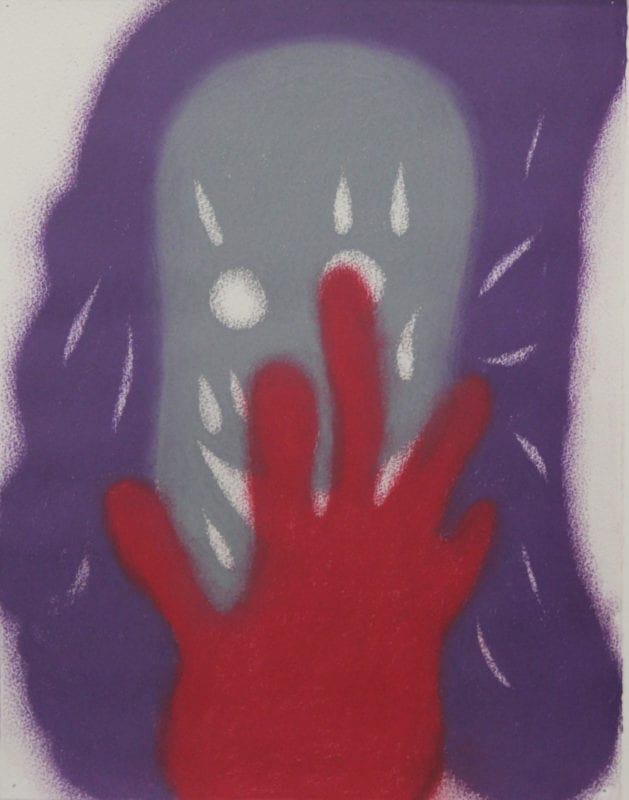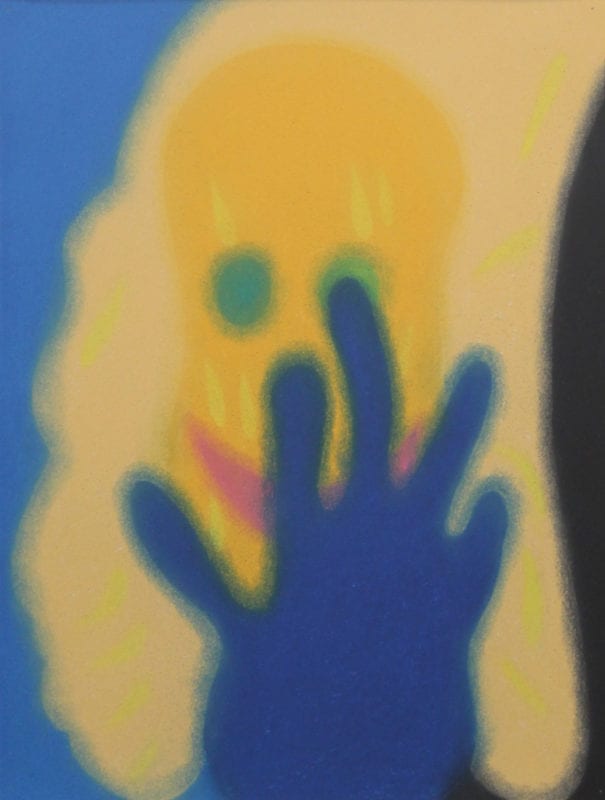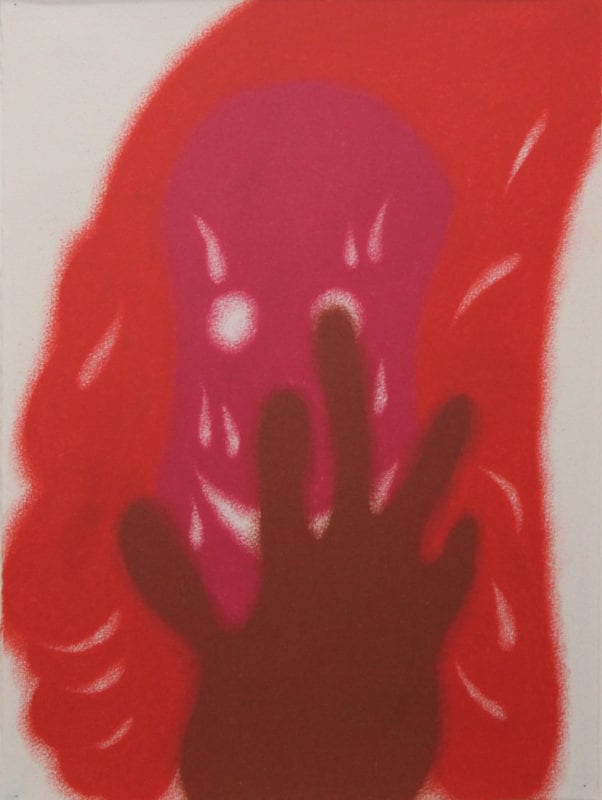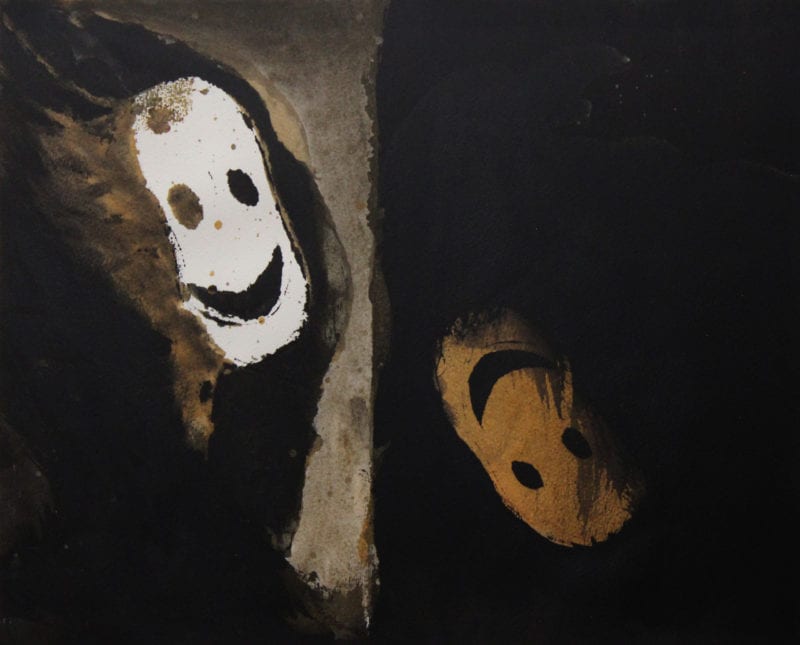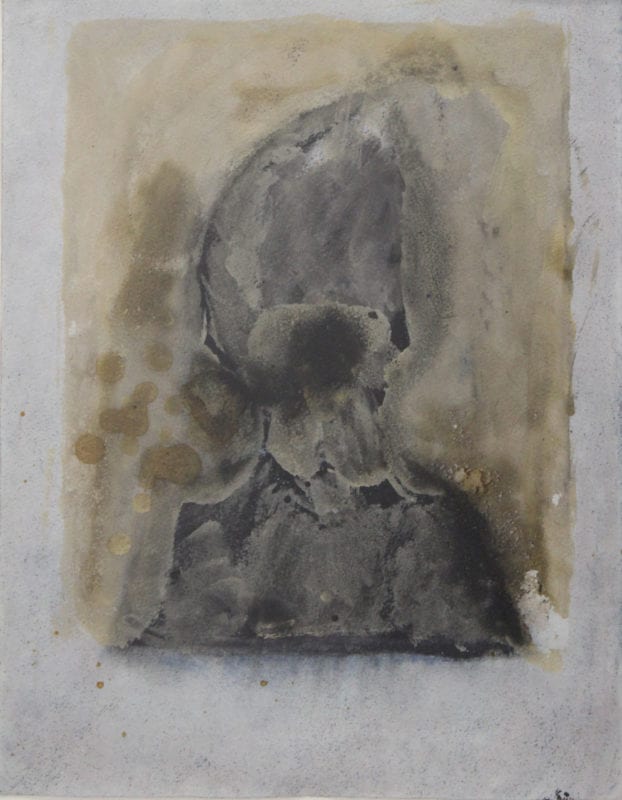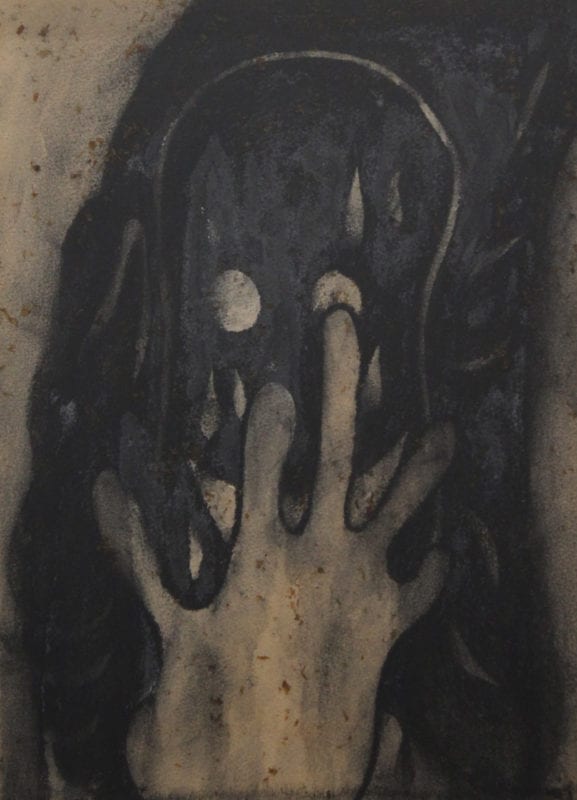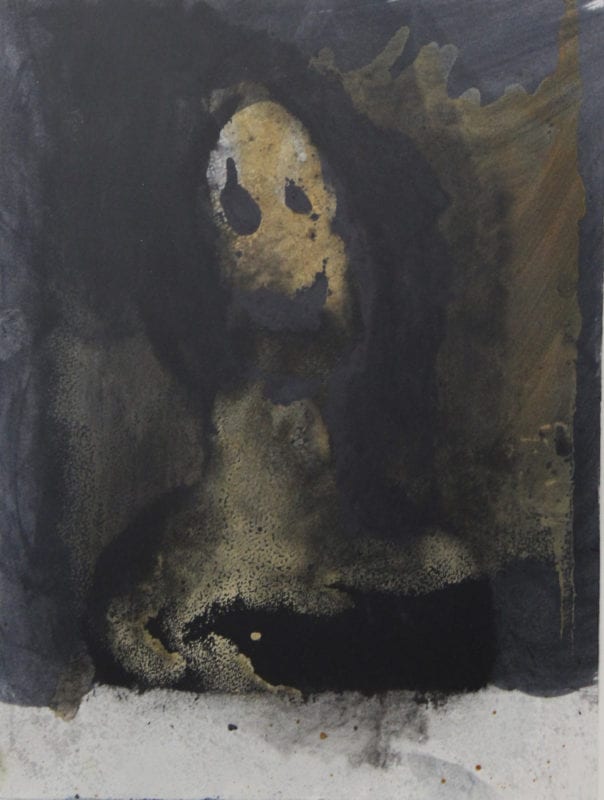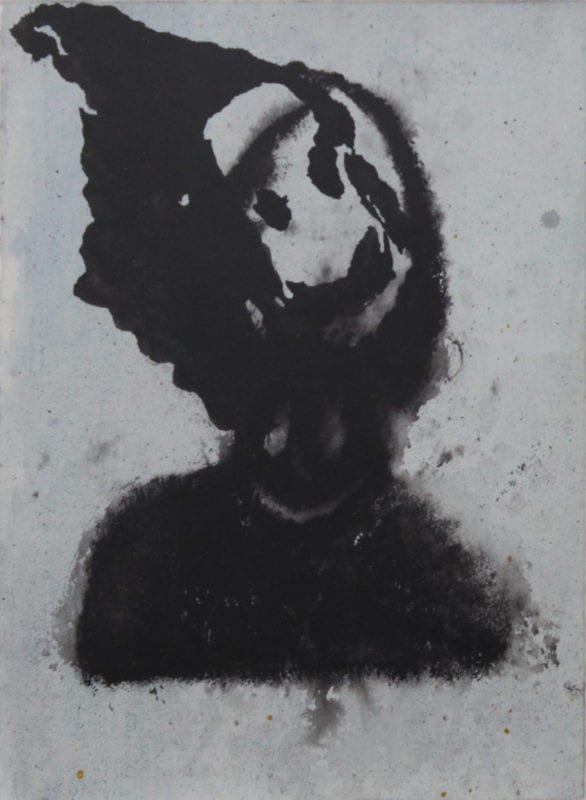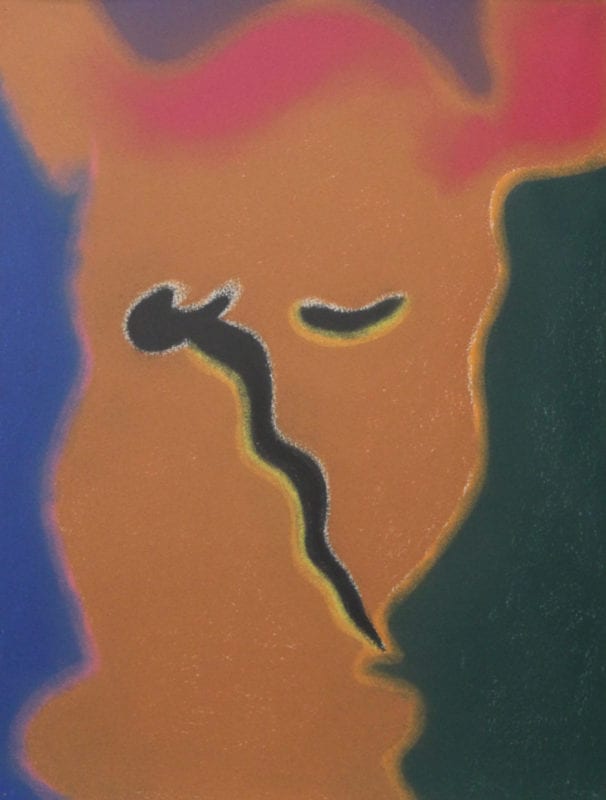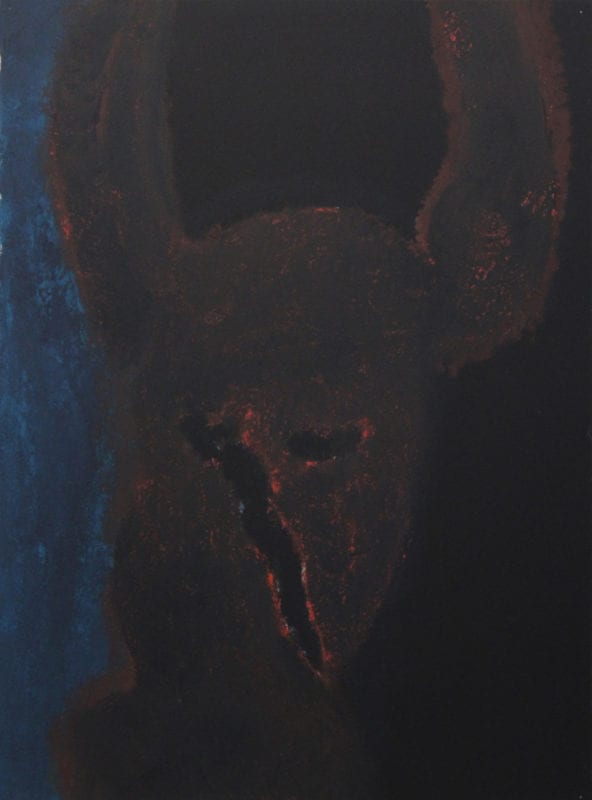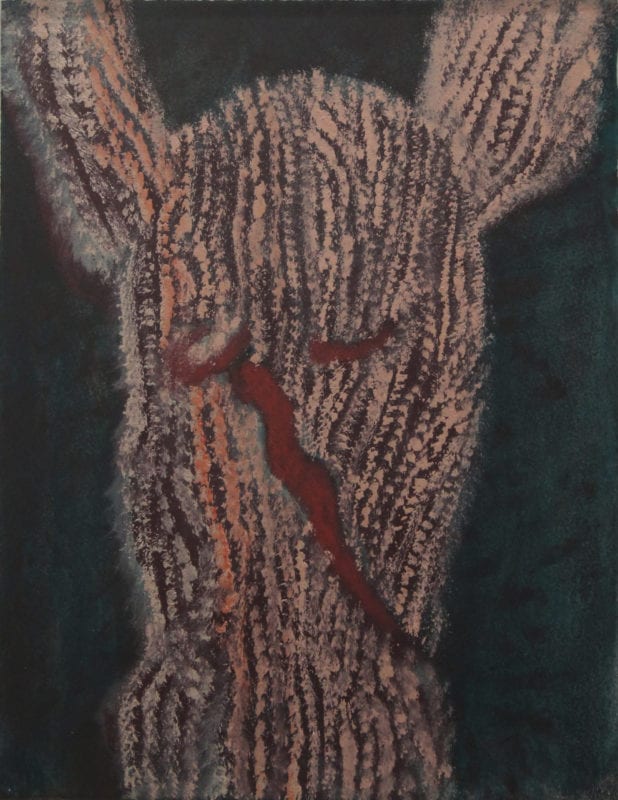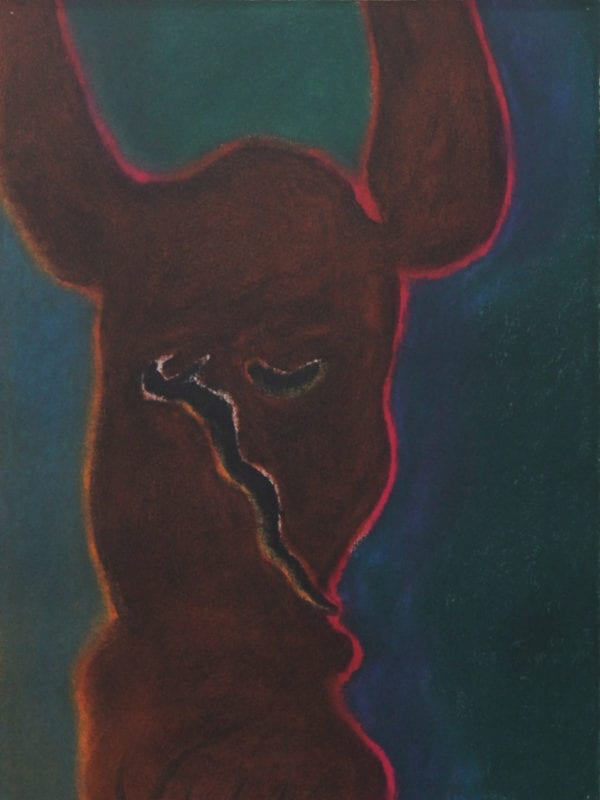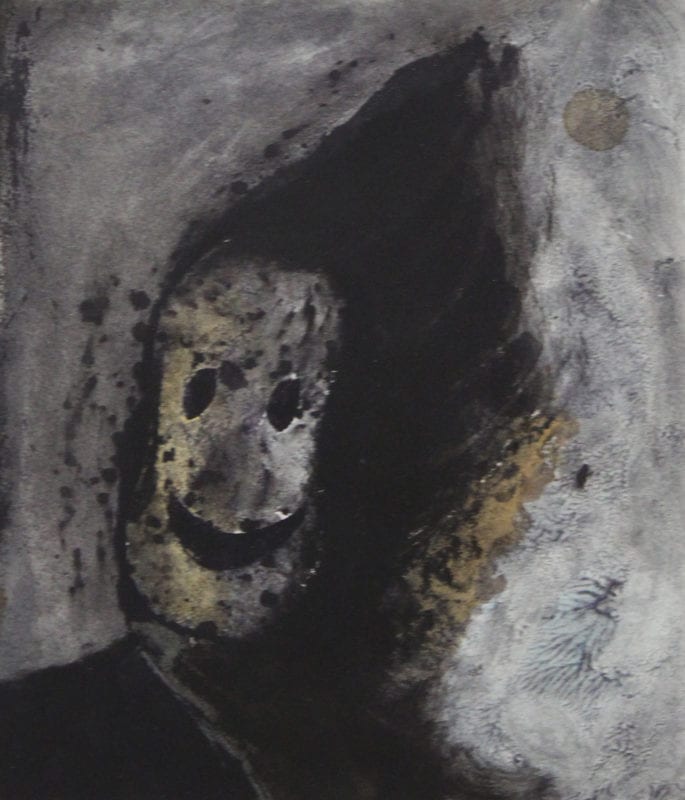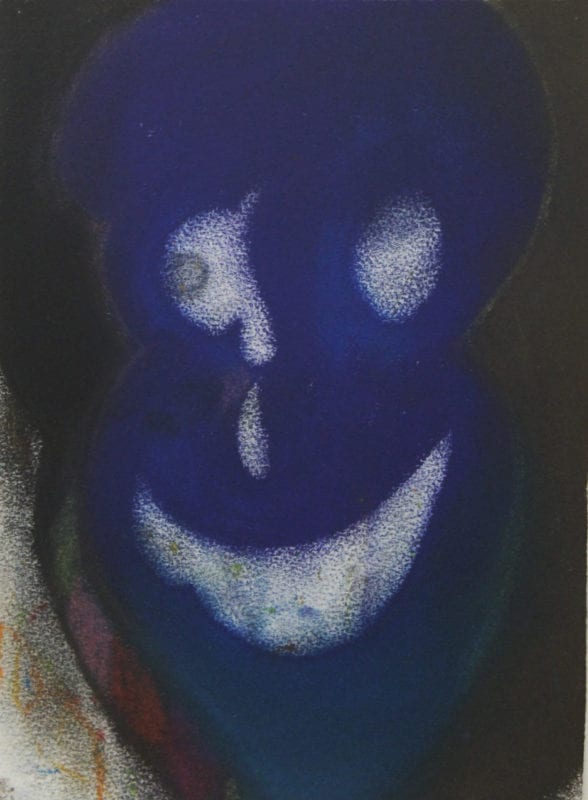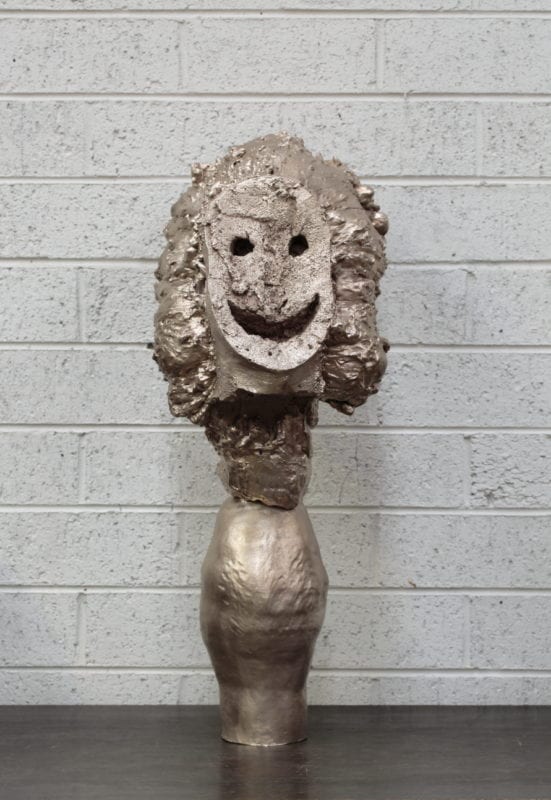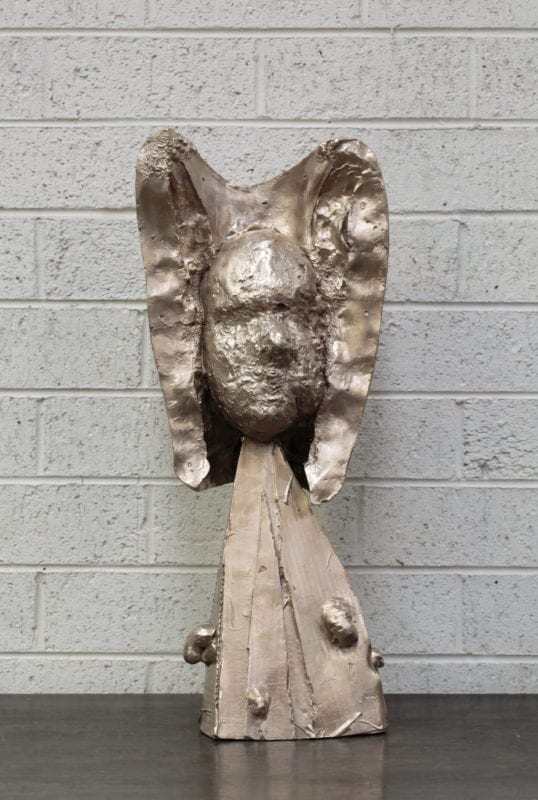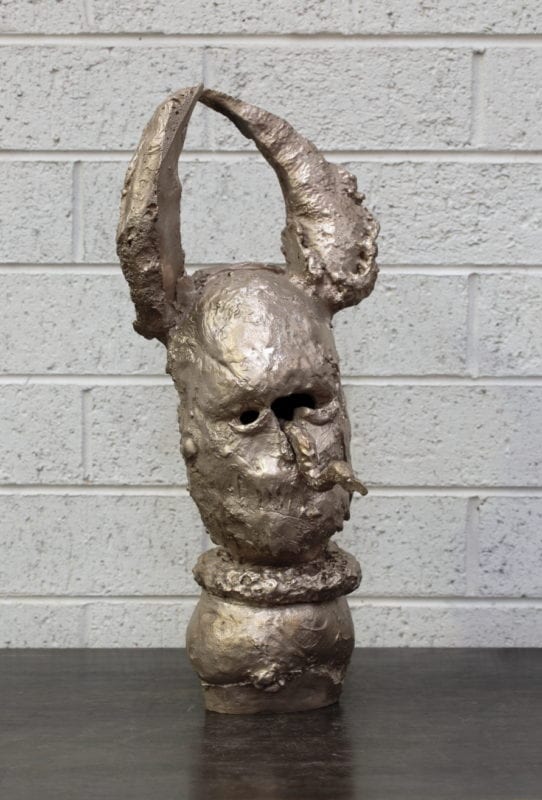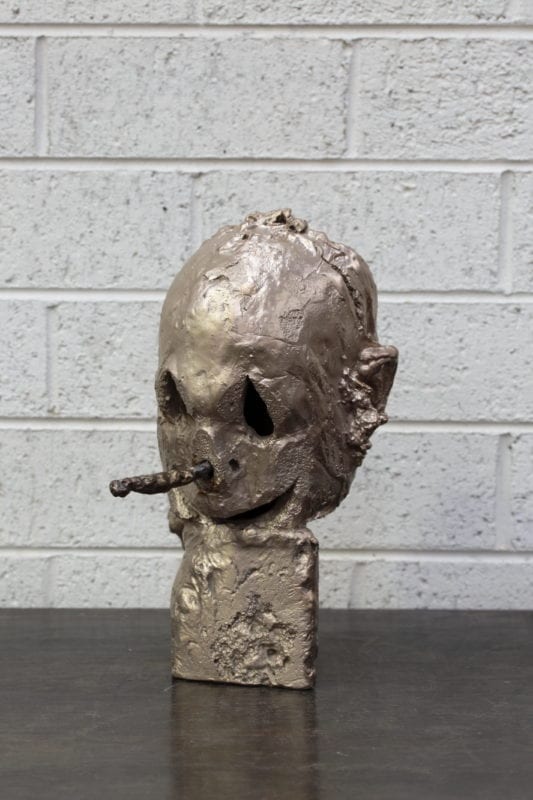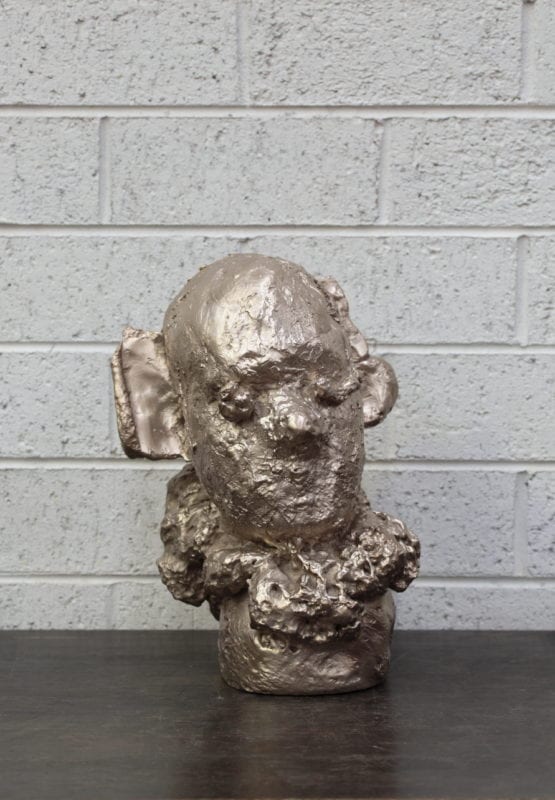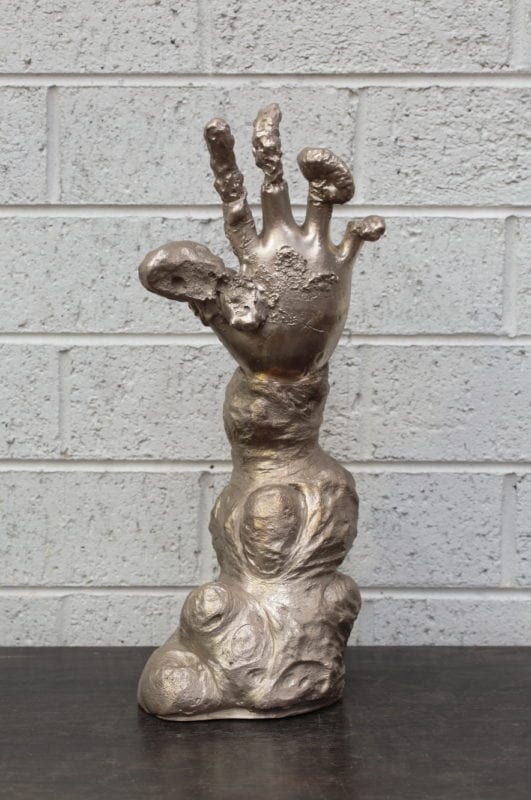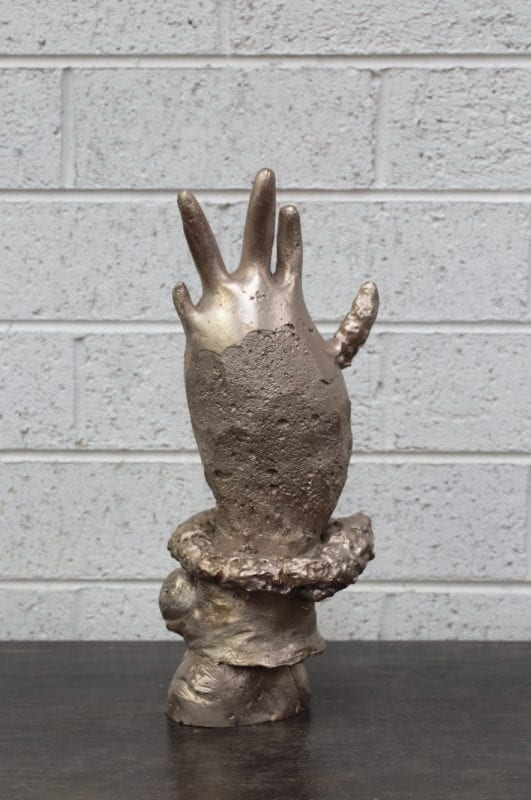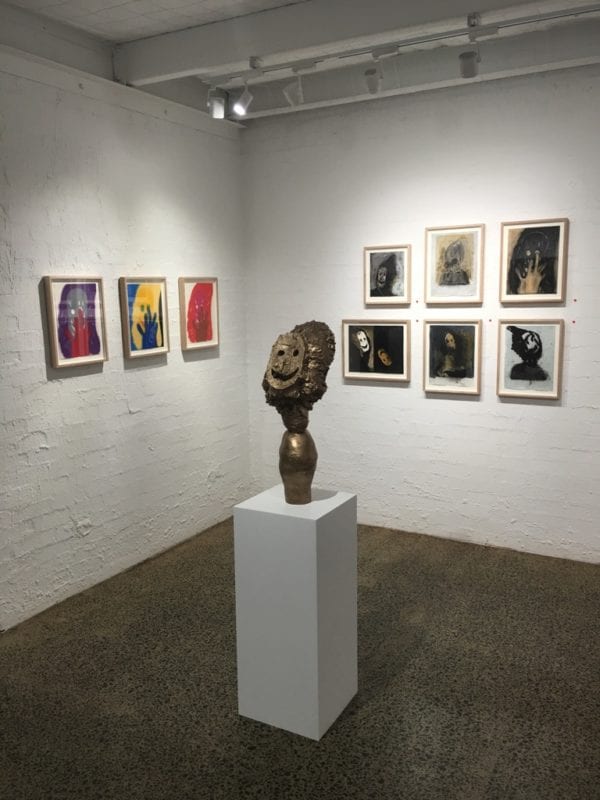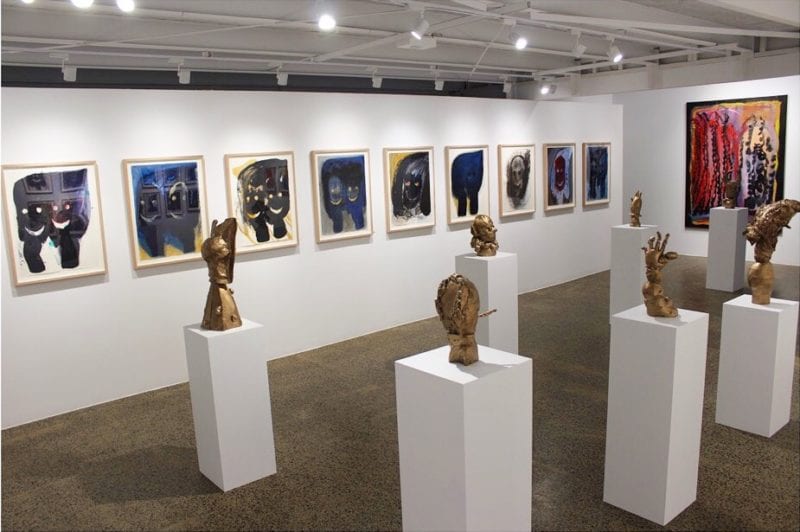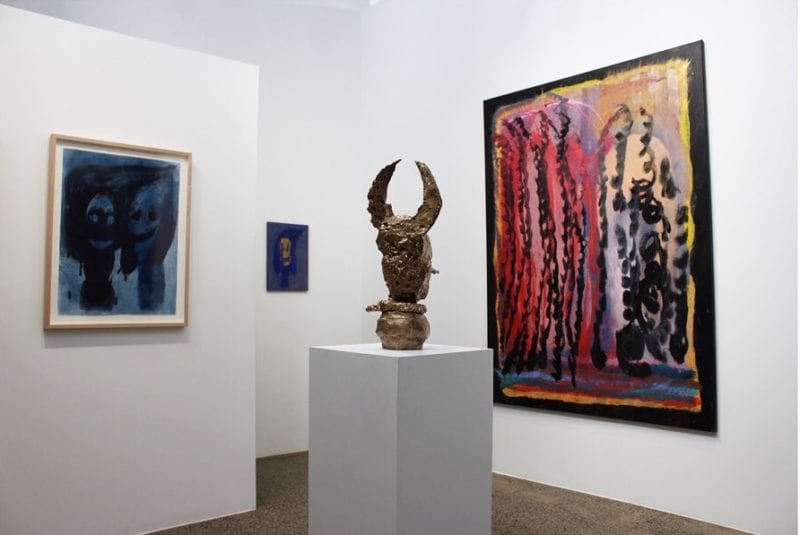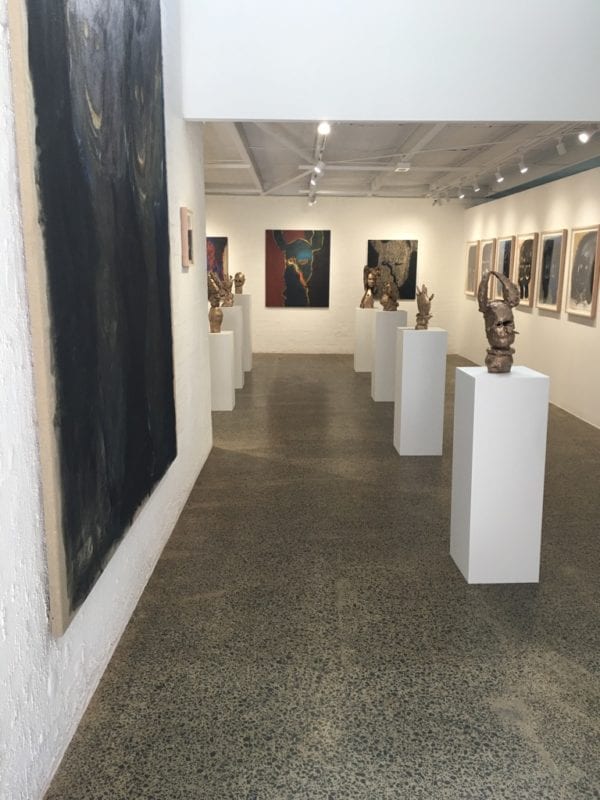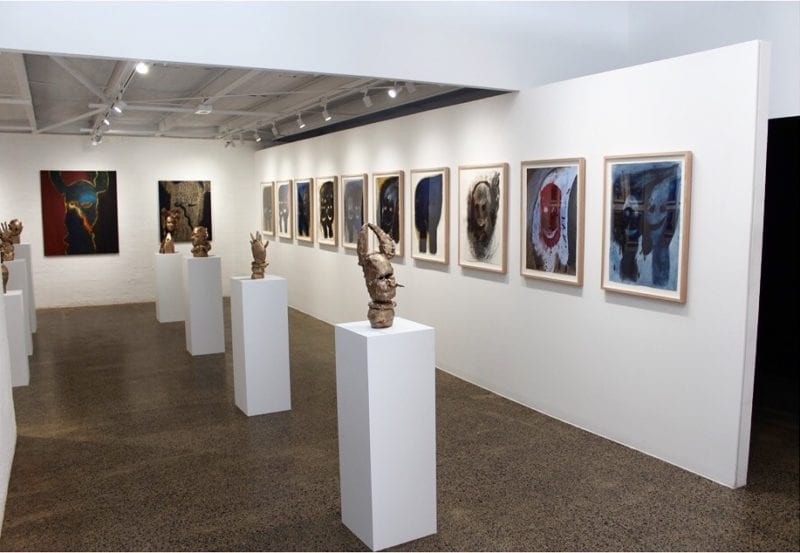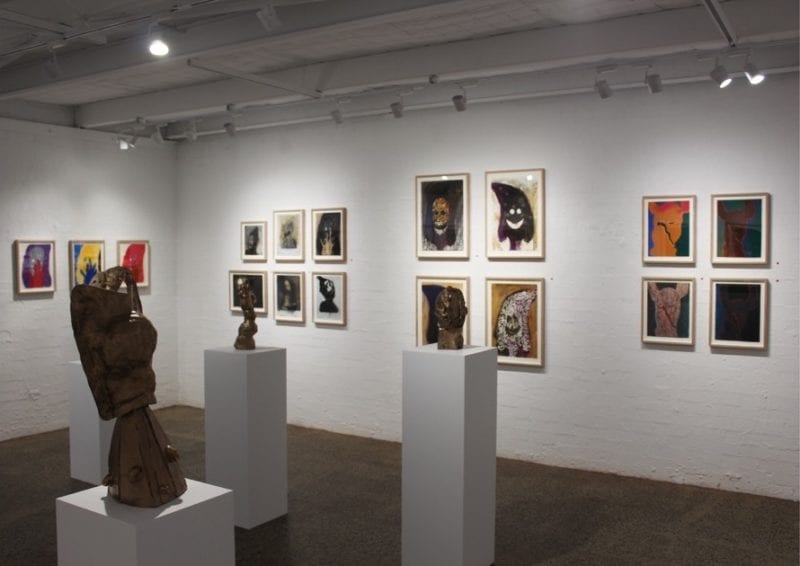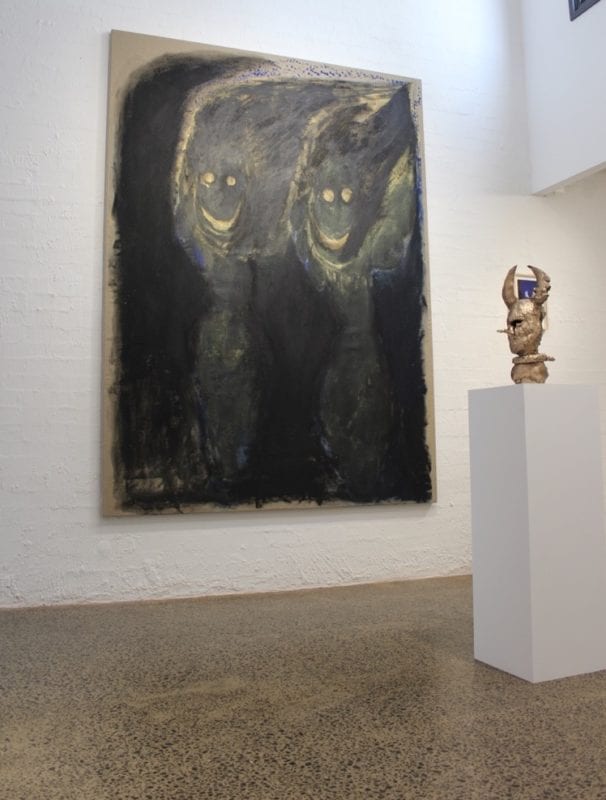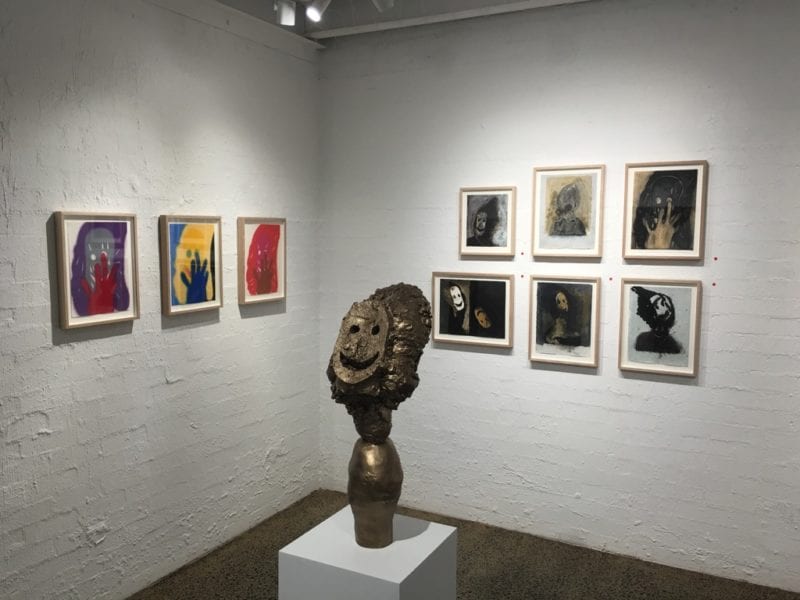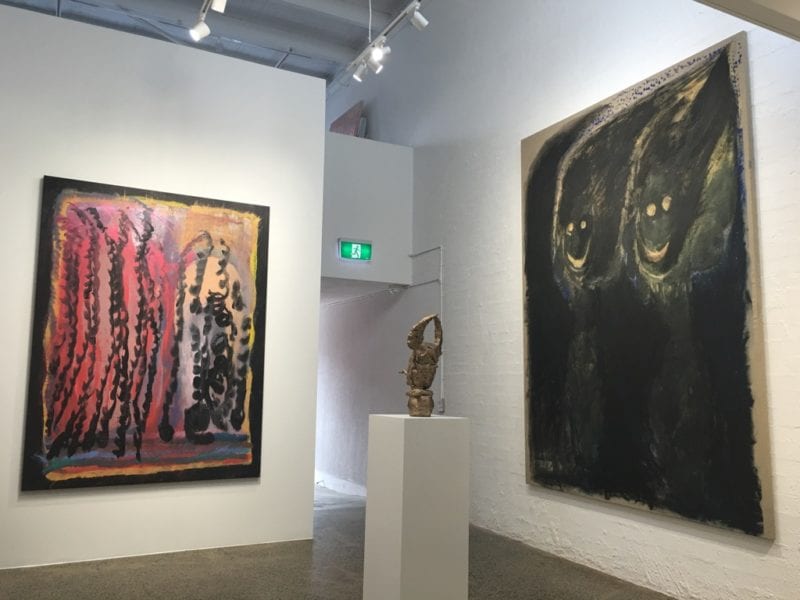RHYS LEE: SPIT SHINE (2016)
30 JULY TO 21 AUGUST 2016
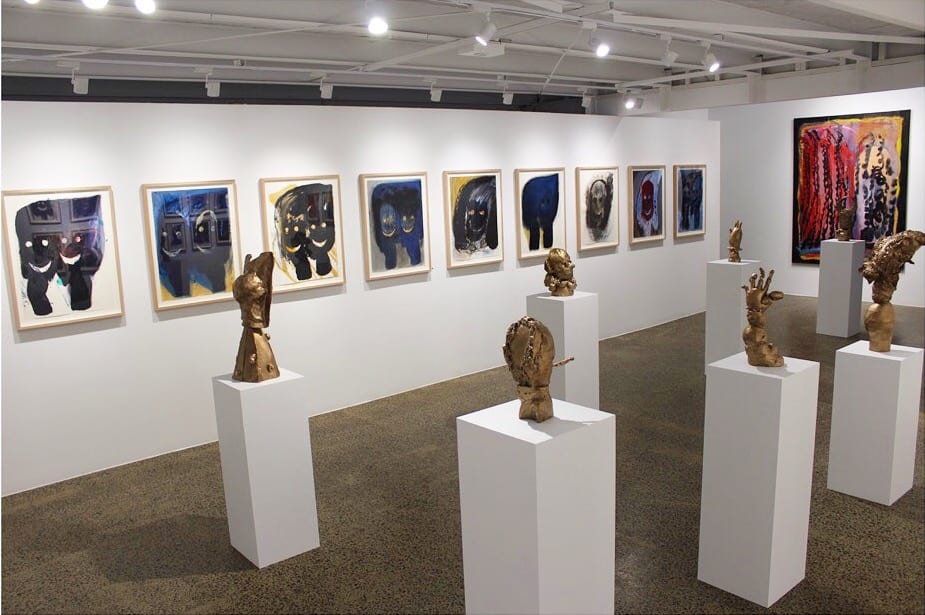
Rhys Lee: Hopeful Monsters
The senior artist Gareth Sansom recently made a comment about a Rhys Lee work on Instagram, suggesting that the painting shouldn’t work, “but it does.” Over a recent lunch he convinced Lee that the comment was meant as an utter compliment, however Sansom’s comment certainly was astute: There is always something “wrong” with Rhys Lee’s work, something wonderfully off-kilter that is at first utterly unnerving but, once it settles, becomes entirely beguiling.
“I’ve been going through a colour period in the last few years,” he said at that same lunch. “But now I’m turning towards a dark period.” As a youthful artist, Lee’s work had aggression and darkness at its very heart. But in 2009 he moved to the bush and has since become a proud father of two, a fact that is clearly filtering into the new works with feral energy.
Lee’s next outing will be a fearsome collection of sculpted bronzes with accompanying paintings. The resulting army, or menagerie, of sculptures are amongst the oddest works in Lee’s oeuvre to date. Manically grinning heads sit alongside malformed hands and strange, bulbous portraits. The Hand of the Artist here is battered, malformed, truncated and bloated. On the one hand, Lee’s appendages are the victims of some form of hideous leprosy, on the other they resemble the withered balloons employed in the arsenals of deranged clowns. At times they resemble sea anemones, those beautiful flower-like entities that are in fact predatory oceanic animals.
Humans love monsters and, according to at least one theory of biology, that may be because we ourselves are possibly monstrous – quite literally. Humans may be the result of what German-American biologist Richard Goldschmidt termed a “Hopeful monster.” His concept, conceived in the 1940s, suggests that, alongside Darwin’s theory of evolution, major evolutionary shifts have, on occasion, exploded in massive leaps between species. Joyous mutants or, to quote David Bowie, “Scary Monsters,” and “Super Creeps.”
For Lee, however, these strange busts act more as portraits of the human condition. He muses that they may in fact be self-portraits, reflecting the wild leaps from somber anxiety to joyous transcendence that the artist himself has felt during the tumultuous emotional upheavals of beginning a family and creating art.
There is another element in these new works, perhaps spawned from his own childhood; that of the phantasmagorical. At times we are reminded of the works of Robert Anning Bell (1863-1933) who penned the grotesqueries illustrating Grimm's Household Tales, the drawings by the author of Gormenghast, Mervyn Peake (1911-1968) and the macabre etchings of Hieronymus Bosch (1450-1516).
Such imagery delights and terrifies children and adults alike, an uncanny frisson that Rhys Lee is now setting free in the gallery environ. Having emerged from the canvases they were conceived on, these creatures are now set in burnished bronze, standing proudly like some kind of family portrait of an other-dimensional Game of Thrones. Some of them grin madly, others portray a more somber mood, each exudes personality. For all their strangeness, there is something intimate about these works, perhaps reminding us of youthful dreams (or nightmares). There can seem to be little doubt that fatherhood has influenced this mid-career artist in the best of ways.
– Ashley Crawford
